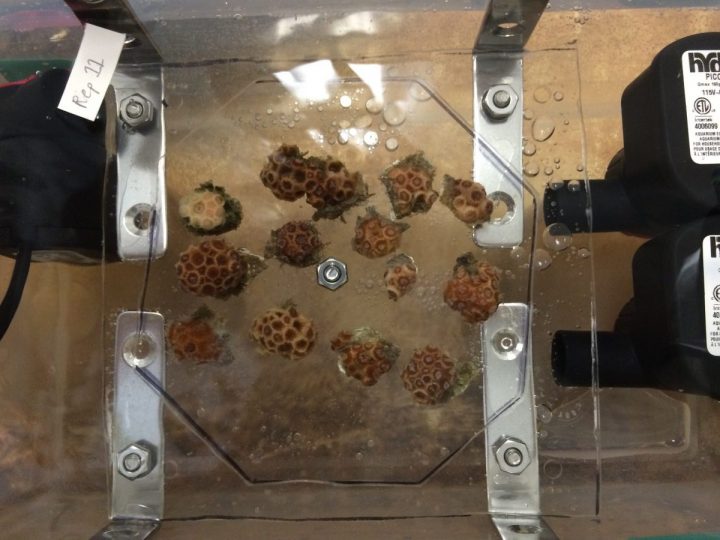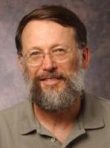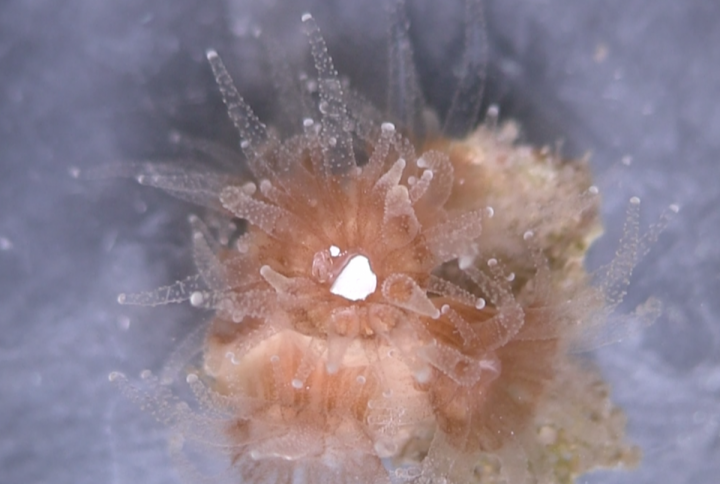
BEAUFORT – For a real challenge in the grocery store, try avoiding plastic packaging. It’s nearly as impossible as picking the fastest checkout line.
Although plastic consumption poses many challenges to humans and the environment, there is one problem we don’t have: differentiating plastic from food. A teenager snacking on pretzels, for example, wouldn’t accidentally eat the bag by mistake. Corals, on the other hand, may be confusing plastics for food, according to new research from the Duke University Marine Laboratory.
Supporter Spotlight
It’s well established that marine animals eat plastic, but it has been assumed that they do so because of optical illusions or indiscriminate feeding. Turtles likely eat plastic bags because they look like jellyfish, and filter feeders, including oysters, ingest tiny bits of plastic along with anything else floating in the water.

But plastic consumption may not always be so easily explained. “Our study suggests that there is potentially another reason as well, and that is, that plastic may inherently taste attractive,” said Alex Seymour, a researcher and Geographic Information System, or GIS, analyst at the Duke Marine Lab.
The conclusion is the result of a series of experiments conducted by Seymour and Austin Allen, a doctoral candidate at the Duke Marine Lab, showing that not only do corals eat plastic, they actually prefer it. Their findings have inspired new pathways of research on plastics and marine life, with implications for the plastic industry and food security.
“The reason it’s important is corals are foundational, and all sorts of animals eat corals,” said Dan Rittschof, professor of marine science and conservation at Duke University. Rittschof used his expertise in chemical toxicology to advise Allen and Seymour on their project.
Rittschof explains that when corals eat plastic, the consequences reverberate through the ecosystem. “It’s not the plastic necessarily that’s going up the food chain,” he said. “It’s the molecules in the plastic that are going up the food chain.” Those molecules include plastic additives, many of which have unknown effects on human health.
Supporter Spotlight
“So the red snapper you eat from Indonesia, for example, could have levels of toxic compounds in it that you don’t know anything about,” Rittschof said.
Why So Tasty?
Scientists are still studying what happens to animals that eat small plastic fragments, known as microplastics. Allen and Seymour’s research sheds light on why corals might eat microplastics in the first place.
They selected corals because of the animal’s feeding process. Since corals do not have eyes, they use chemoreception to identify food. When chemoreceptor cells on a coral’s tentacles detect compounds associated with food, they trigger stinging cells that capture the prey. This simple nervous system response allows corals to grab food as it floats past.
Allen and Seymour started their study by asking whether corals’ chemoreceptors could differentiate between sand and plastic. They placed specimens of Astrangia poculata, a stony coral found off the North Carolina coast, in a tank of water, then hand-fed them sand and a variety of microplastics.
“Regardless of the plastic type in that experiment, the corals were eating it and they were not eating sand,” Seymour said. The corals ate 80 to 90 percent of the microplastics, compared to just 10 percent of the sand.
The surprising result led the researchers to add another layer to the experiment. In the ocean, plastic surfaces can be colonized by creatures through a process known as biofouling. Buoys become encrusted with algae and barnacles, for example, and microplastics are coated with a film of bacteria. The researchers wondered if the corals’ chemoreceptors had sensed the bacteria on the microplastics and recognized it as food.

To test this, Allen and Seymour sprinkled clean and biofouled microplastics into the tanks. “We absolutely were expecting that the corals would prefer to eat the weathered biofouled plastic,” Seymour said. He and Allen hypothesized that corals would go for plastic covered with a tasty, nutritious bacterial film.
They found the opposite: The clean plastic tasted great. Corals ate between three and five times as much clean plastic as biofouled plastic. In other words, coral’s chemoreceptors were triggered more often when they sensed the plastic than when they sensed the bacterial film. The corals responded to the plastic as if it was food.
“I was shocked when clean plastic was eaten,” Rittschof recalled. “And the reason I was shocked was because, it never occurred to me that the processing of plastic would include molecules that taste like food.”
According to Bruce Robertson, assistant professor of biology at Bard College in New York State, the result is an example of an evolutionary trap, which he defined as occurring “when the cues animals use to make decisions are no longer reliable.”
“In this case, humans have created a substance that corals haven’t encountered in their evolutionary history, but which just happens to have a smell that corals have evolved to associate with food,” Robertson said. “In a world full of plastic, using smell as a way to determine whether a captured object is food or not, is no longer reliable and can actually hurt them if the smell is associated with plastic.”
After the corals fed, they were transferred to another tank and given 24 hours to spit out any plastic they’d eaten.
“We found that about 8 percent of the total plastic that was ingested by these corals was retained in their bodies after 24 hours,” Seymour said. He and Allen did not evaluate the corals’ health, but at the very least, plastic consumption can trick animals into thinking they’re full, leading to malnourishment.
Their findings: corals prefer to eat clean plastic, and that plastic lingers in their bodies more than 24 hours after they gobbled it up. That’s not a bad contribution to science for work that started as a side project in an ecology course.
Plexiglas and Tupperware
Allen and Seymour, who were both master’s students at the time, knew that previous research by Nora Hall of James Cook University in Australia had documented corals consuming plastic.
“We said, we want to do something different, we want to try and measure what the corals ingest and what they spit out,” Allen said. To answer that question, they headed to the hardware store.
The researchers needed to create a tank in which the corals would be submerged and exposed to particles drifting in the water. Their first challenge was that the microplastics bobbed on the water surface rather than sinking through the water. Not only did Allen and Seymour need some way to keep the microplastics circulating throughout the tank, they had to ensure that the corals wouldn’t be disturbed by the water flow.
Armed with Plexiglas sheets, aquarium pumps and Tupperware containers, Allen and Seymour spent weeks tinkering with the design. “We were going in (the wet lab) and trying different pumps and flow rates and seeing how the corals reacted to the different setups,” Allen recalled.
A shared hobby ended up contributing to their ultimate success. “I think we felt comfortable using and tackling this feeding chamber approach because we had both been saltwater aquarists before we tried to do this research,” Seymour said.
Allen and Seymour also created the concept of placing corals in a separate tank to spit out any plastics. “We were able to take the corals out, after they’d eaten any plastic they wanted to, and then actually measure the plastic inside the corals,” Allen said. Previous studies had quantified plastic consumption by measuring concentration changes in the water rather than directly assessing the animals.
Many people think that scientific discoveries require expensive equipment, but Allen and Seymour demonstrated that groundbreaking science can also happen with Tupperware.
The impacts of their study should be considered in global context. “There are many threats to corals,” Allen said, explaining that plastics should not overshadow stressors such as ocean acidification.
Robertson suggested that further work on coral physiology could help illuminate the scale of the plastics problem. “The next step is to examine the consequences of ingesting plastic for coral survival, growth and reproduction,” he said.
Future work can also attempt to identify the specific compounds that are being mistaken for food. “We hope that researchers continue to increase the amount of attention they’re devoting to chemoreception and plastic ingestion,” Allen said.
“It’s opened up my eyes and given me a line of research because I can look and see what other kinds of marine animals like the taste of plastic,” Rittschof said. He is continuing to explore plastic ingestion in anemones and barnacles. Like corals, these animals use chemoreception to find food.
Allen and Seymour’s research is unlikely to overhaul plastics manufacturing. If scientists can start to understand the tastiness of plastic additives, however, manufacturers can use it to their advantage.
“Then we can add something in there to make it taste repulsive, and in so doing, prevent corals and other critters from eating the plastic,” Seymour said.
In a few decades, perhaps plastic pretzel bags will taste as disgusting to corals as they do to humans. Until then, limiting plastic pollution is likely the best way to keep those delicious microplastics away from corals.











